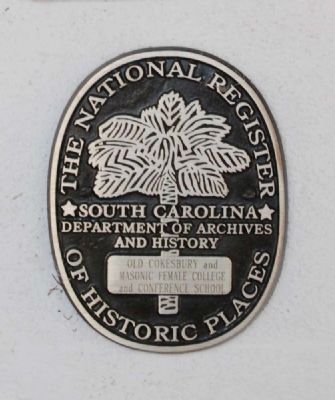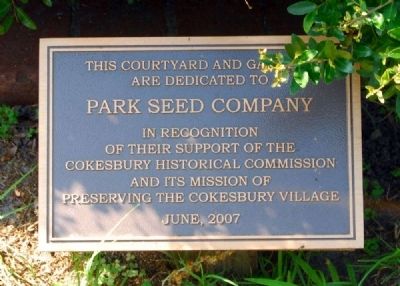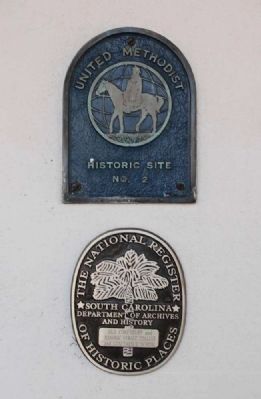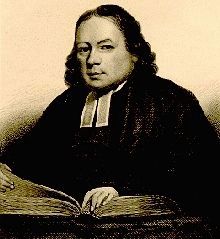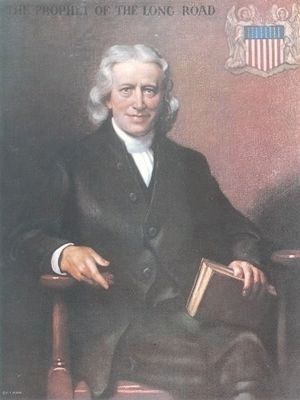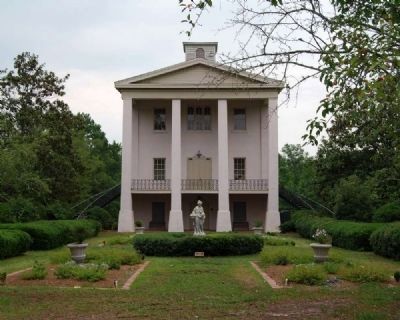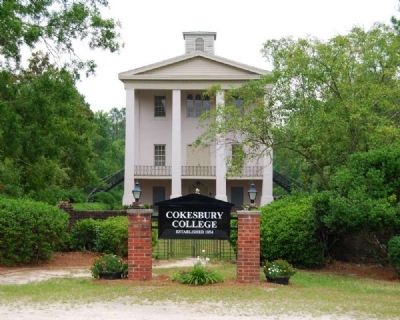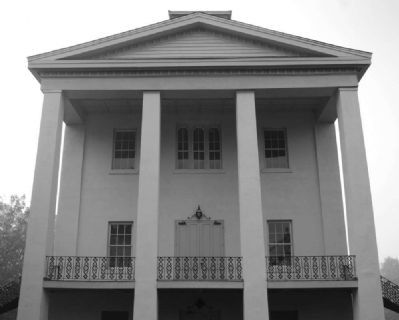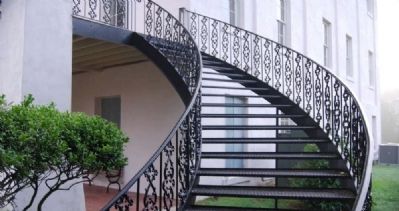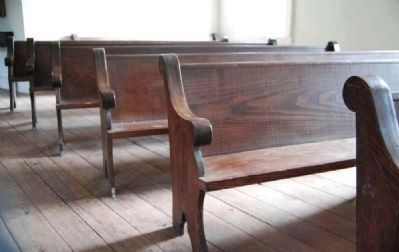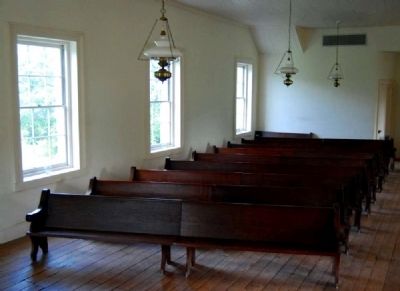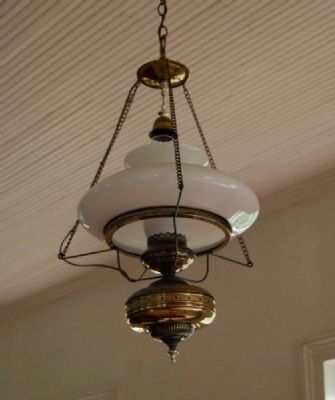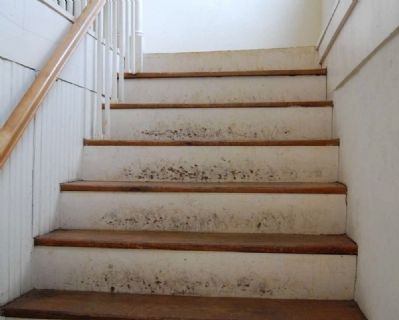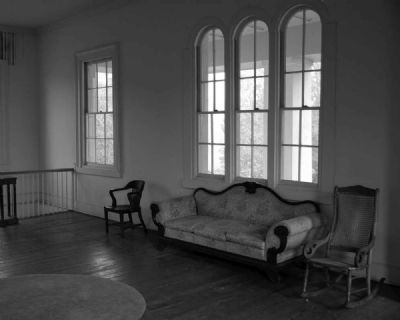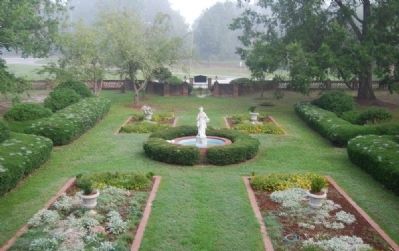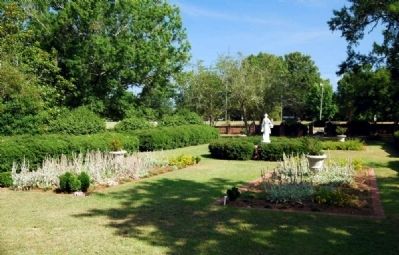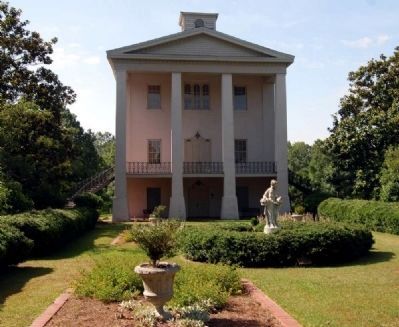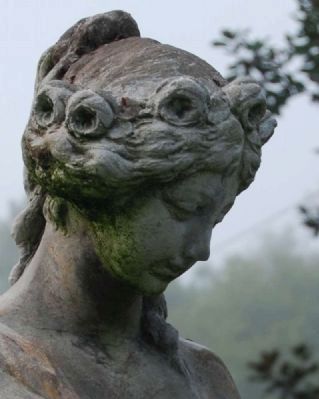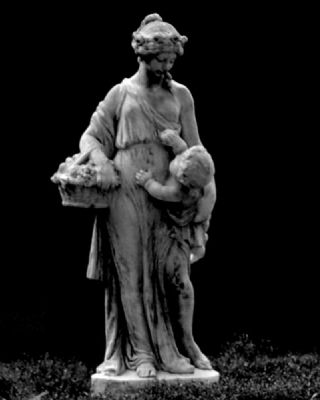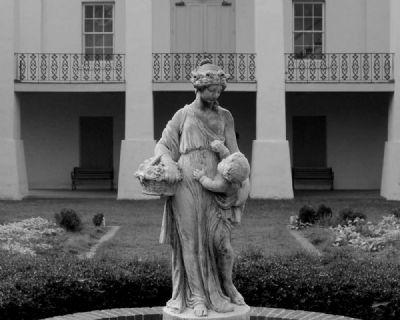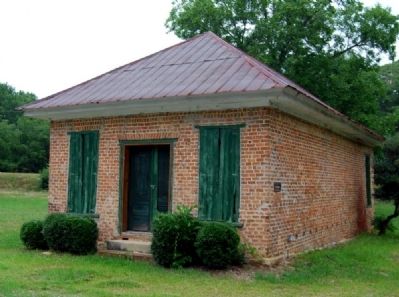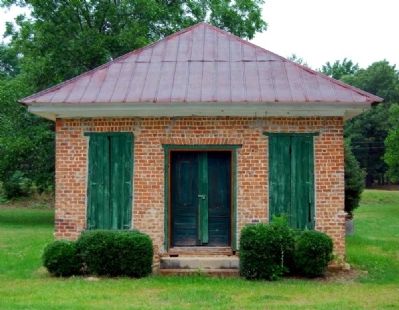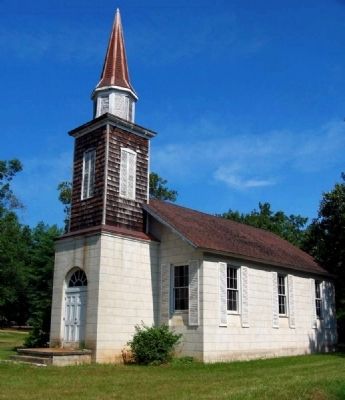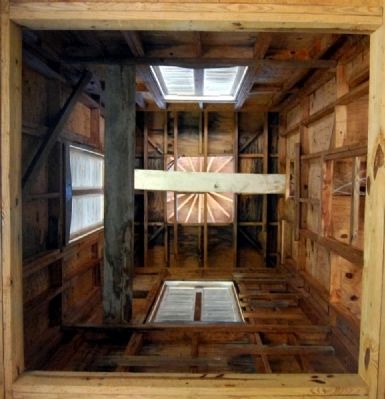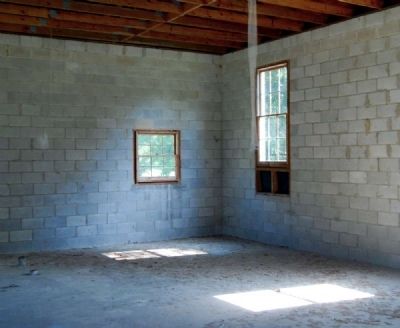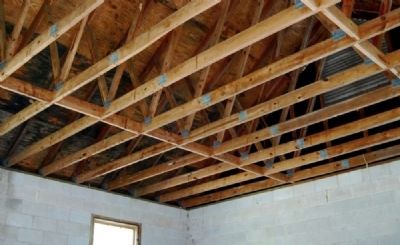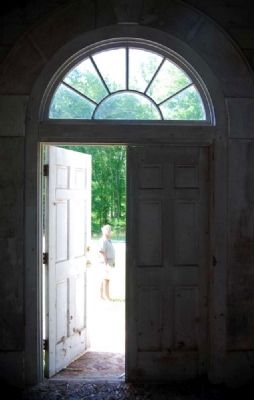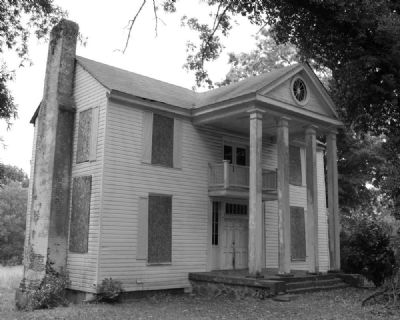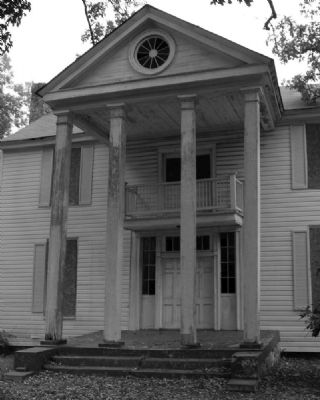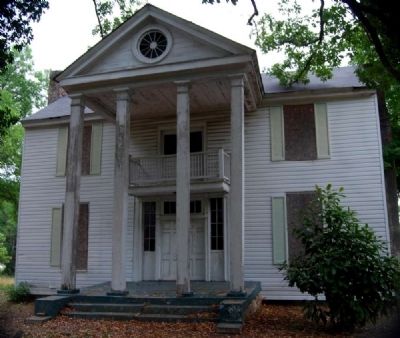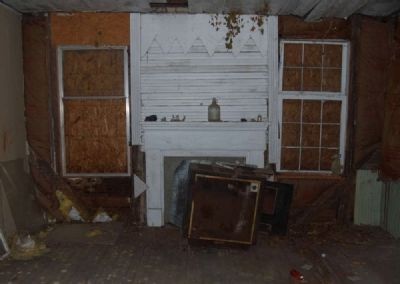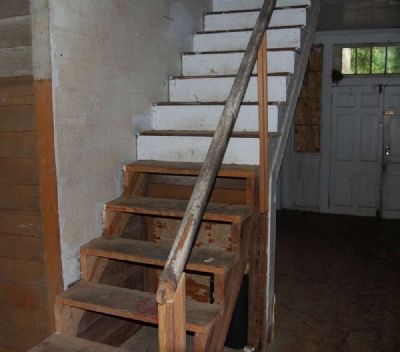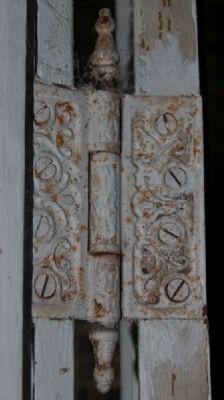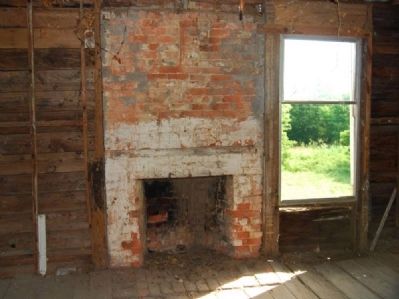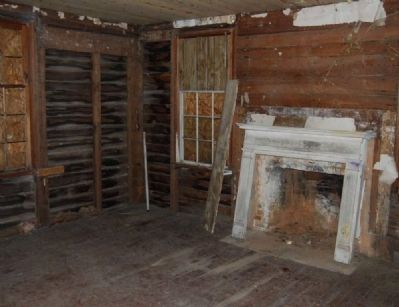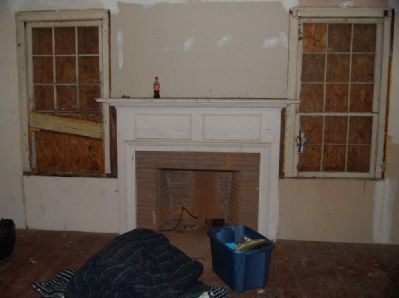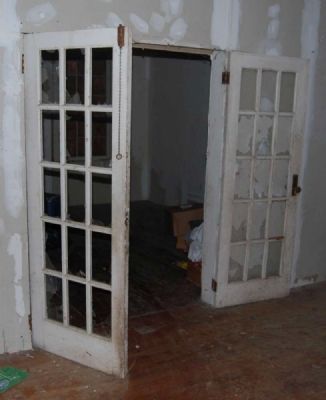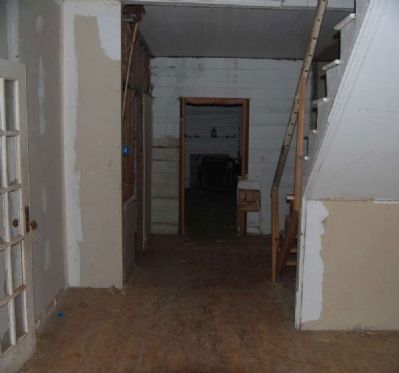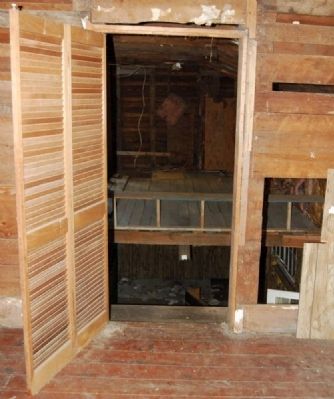Hodges in Greenwood County, South Carolina — The American South (South Atlantic)
Old Cokesbury and Masonic Female College and Conference School
Inscription.
of Historic Places:
Old Cokesbury and
Masonic Female College
and Conference School
Erected 1970.
Topics. This historical marker is listed in these topic lists: Education • Women.
Location. 34° 17.183′ N, 82° 12.983′ W. Marker is in Hodges, South Carolina, in Greenwood County. Marker is at the intersection of College Drive and Asbury Road on College Drive. Touch for map. Marker is in this post office area: Hodges SC 29653, United States of America. Touch for directions.
Other nearby markers. At least 10 other markers are within 8 miles of this marker, measured as the crow flies. Payne Institute (approx. 0.2 miles away); Park’s / Greenwood County (approx. 1˝ miles away); Moorefield Memorial Highway (approx. 1.6 miles away); Tabernacle Cemetery (approx. 2.2 miles away); Good Hope Baptist Church (approx. 4.1 miles away); Greenville Presbyterian Church (approx. 6.6 miles away); In Memorium (approx. 6.7 miles away); Western Laurens Volunteer Fire Department (approx. 7.2 miles away); Greenwood SC Memorial Marker (approx. 7.2 miles away); Old Greenwood Cemetery (approx. 7.2 miles away). Touch for a list and map of all markers in Hodges.
Regarding Old Cokesbury and Masonic Female College and Conference School. While it is lacking one of the familiar markers, Old Cokesbury is a stop on the South Carolina Heritage Corridor.
Also see . . .
1. Old Cokesbury and Masonic Female College and Conference School. The Old Cokesbury College building was built in 1854 in the Greek Revival style. (Submitted on April 7, 2010, by Brian Scott of Anderson, South Carolina.)
2. Cokesbury, South Carolina. Cokesbury is a census-designated place (CDP) in Greenwood County, South Carolina, United States. (Submitted on April 7, 2010, by Brian Scott of Anderson, South Carolina.)
3. Thomas Coke. Thomas Coke (September 9, 1747 – May 2, 1814) was the first Methodist Bishop and is known as the Father of Methodist Missions. (Submitted on April 7, 2010, by Brian Scott of Anderson, South Carolina.)
4. Francis Asbury. Francis Asbury (August 20, 1745 – March 31, 1816) was one of the first two bishops of the Methodist Episcopal Church in the United States. (Submitted on April 7, 2010, by Brian Scott of Anderson, South Carolina.)
Additional commentary.
1. Old Cokesbury and Masonic Female College and Conference School
The l16-year-old building which began as the Masonic Female College of South Carolina is being restored as the focal point of efforts to preserve what is left of the once-thriving Cokesbury village
and to develop the area as a cultural and recreational asset.
The Old Cokesbury College building (later used for the Cokesbury Methodist Conference School from 1876-1918) was built in 1854 and has suffered few. alterations. It is Greek Revival in style, with bell tower, four square columns rising from ground level to pediment, double-door entrance at second-floor level. The interior was divided into four recitation rooms and four music rooms on the first floor, a chapel on the second floor, Masonic Lodge headquarters on the third. There was no dormitory; young ladies boarded in town.
Present restoration, begun in 1968, has replaced the old roof, refinished the total exterior (steel webbing nailed over brick and re-stuccoed), added circular steps and temporary shutters while glass is being made for the huge windows. Interior restoration will include a first-floor parlor and a bedroom furnished with hand-carved rosewood bedroom furniture (c.1840-l850); a second-floor chapel with pews from the oldest Methodist church in Lancaster; also an antique pulpit, bishop's chair and rosewood piano; and a third-floor Masonic museum and a parlor for meetings.
The four acres around the building have been landscaped to include 18 magnolias, 400 azaleas, a formal garden, fountain, 600-foot brick wall and entrance.
The village itself dates from 1824, when the
present main street was laid off. This was one of South Carolina's earliest planned communities. It was developed for and around the school. The site -- on a high, sandy ridge with oaks and other hardwood trees and a view of distant Blue Ridge mountains was especially chosen by citizens of the nearby Methodist community, Tabernacle, where an academy for boys had already established the reputation for excellence. The Tabernacle citizens wanted to build a bigger school and to relocate their town in a "healthier" spot. In an ambitious real estate development, they divided the ridge site into 20-25-acre lots so that plantation owners could build homes, create a congenial village and manage their outlying farms through overseers. Since the lots had to be big enough to accommodate houses for slaves who were domestic servants, the town did not grow as one of near-neighbors. But the population was a homogeneous one, culturally and economically, and also included a few doctors, dentists, merchants and retired ministers.
Thoroughly Methodist, the village was first called Mount Ariel. The name was changed to Cokesbury in 1834 to honor Thomas Coke and Francis Asbury, first two Methodist bishops in the United States. Also in 1834, the boys' school came under Methodist Church jurisdiction as the Dougherty Manual Labor School of the South Carolina Conference. During this period, the
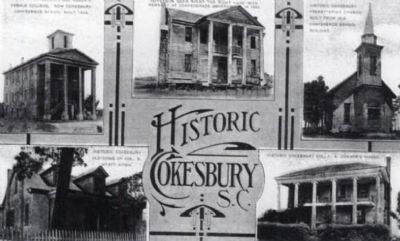
SC Postcards: West Central Carolina Aiken to Saluda, Vol 3 by Howard Woody, Tom Johnson, circa 1912
4. Historic Cokesbury S.C. Lithograph
Top Left: Masonic Female College
Top Center: Thomas F. Gary House
Top Right: Cokesbury Presbyterian Church
(built with bricks from the original school)
Bottom Right: Colonel F.A. Conner House
The village also had an academy for girls and a school for children under 12. The Cokesbury Methodist Church was built in 1837. Businesses included several stores, a steam saw and grist mill, and a carriage factory. There is no record that Cokesbury ever had a tavern.
Judge Christie Benet, last president of Cokesbury College, described the town as "a lovely place with its streets embosomed in shady trees. The people were well-to-do and the whole community carried on like on happy family. For social pleasures there were hot suppers, picnics at the nearby Sulphur Springs and musical parties ••• The men had whist parties (no lady played cards) which were purely tests of skill with no money at stake. There was much fishing, hunting of all kinds, including fox hunting."
The town was noted for the beauty of its homes and gardens. Pen sketches of more than 50 Old Cokesbury buildings as they looked before the Civil War will be included in a forthcoming book on South Carolina by Mrs. Sterling Graydon, one of the Greenwood promoters of the Cokesbury project.
Most of Cokesbury's surviving
homes were built after 1835. A number have similar architectural features, particularly in door and window designs.
Among homes and buildings still standing are:
• 1850 brick store
• 1850 Greek Revival home of Francis A. Connor, planter who was first president of Masonic College
• 1841-45 home of Gen. Martin W. Gary's mother
• 1850 Milam house, cottage type
• 1850 Colonel Wyatt Aiken brick house, where first state grange was organized in 1871
• 1840 Old Rectory
• 1840 Glass-Palmer House
• 1850 Connor-Hodges House
• 1845 Dr. Thomas Gary Home
Significance
Cokesbury's significance stems from its uniqueness as a community and its possibilities of being revitalized as a section that once represented the finest standard of living in the country, a village whose qualities of character, piety and charm were long-lived and far-reaching. An evaluation of the Methodist-undergirded, school-centered community indicates that Cokesbury had far greater influence on the cultural and religious life of South Carolina that its size would seem to justify.
Celebrated for the high caliber of its education was Cokesbury Conference School -- first operated as a school for boys, co-educational from 1882, and a public school from 1918 to 1954, when the property reverted to Methodist Conference. Its lengthy list of distinguished
alumni and teachers included bishops, judges, government leaders, professional men, soldiers, teachers, and college presidents.
W.W. Wightman, whose influence shaped early Cokesbury Institute, was the first president of Wofford College. Among other alumni were first president of Randolph Macon College, two presidents of Columbia College, a president of Wesleyan. The writings of another Cokesbury alumnus, Bishop Holland McTyeire, founder of Vanderbilt University, express the unusual devotion and enthusiasm Cokesbury School inspired. His writings also give valuable insights into schoolboy life of the mid-19th century, especially the era when manual labor schools were in vogue in the South.
The Masonic Female College of South Carolina, an effective though briefer experiment in education for young women (1853-1874), represented ideas that ere rather advanced for the times. This institution also furthered the charm, character and influence of the town. A Cokesbury landmark, it will provide an excellent focal point for district preservation and development.
Cokesbury was one of the South's great centers of developing Methodism, dating from establishment of the Tabernacle Methodist Society between 1778 and 1788.
Cokesbury also had close associations with the Order of Ancient Freemasons. Cokesbury's Bascomb Lodge No. 80, representing nearly every
prominent family in the area, sponsored the Female College.
Other areas of Cokesbury significance include the following:
(1) Confederate President Jefferson Davis spent the night of May 1, 1865 at Cokesbury, en route from Richmond to Georgia. Davis's headquarters was the home of Mrs. Thomas Reeder Gary, whose son, Confederate General Mark W. Gary, was in Davis's military escort.
(2) Cokesbury was the home of Dr. Wesley Calhoun Norwood, physician who achieved distinction and stirred up controversy in the medical profession throughout the United States in the l850s. Involved were his claims about the curative powers of veratrum viride and his own preparation, "Norwood's Tincture," which was made by the religious sect of Shakers.
(3) A late Methodist divine, the Rev. Thomas E. Norris, claimed that the first game of baseball played in South Carolina was at Cokesbury in 1873 when he was a student there; the game was introduced by a teacher who was a Yale alumnus.
(4) At Cokesbury today is the largest group of antebellum structures remaining in Greenwood County.
Cokesbury is expected to become a Methodist and Masonic shrine. Its development has the support of the Methodist Church; the Grand Lodge of South Carolina Masons is underwriting some of the interior restoration of the college building.
In addition to encouraging private development in keeping with Cokesbury's original charm and beauty, long-range plans include renovation of the two-story Gary home and development of the surrounding 50 acres as a recreation area. A youth center, baseball and football fields, and a camping ground are planned. A creek at the back of this tract will allow creation of a lake. The Greenwood Little Theater plans to build at Cokesbury on land adjoining the college. The proposed building would include workshop and stage areas in addition to an auditorium seating between 250 and 300.
The Cokesbury development has strong local and statewide support, and it dovetails well with such other programs in the same historic Old Abbeville district as the Ninety Six-Star Fort restoration, and recreational facilities being developed on Lake Greenwood. (Source: National Register nomination form.)
— Submitted April 7, 2010, by Brian Scott of Anderson, South Carolina.
2. Cokesbury College: Renaissance of the Greenwood County Community's Cornerstone
by Berry Lynn Hall
Tommy O'Dell chuckles he shares his passion for Cokesbury and Cokesbury College. "If you would've told me 10 years ago that in my retirement, I'd become so involved in local preservation, I would have laughed. But it gets ahold of you."
What
is known today as Cokesbury, located on Road 154 near Greenwood, didn't fully emerge until 1834. Ten years earlier, the Tabernacle Community, once situated near the current location of Park Seed, wanted to build a new school and move their settlement to higher ground. They named the new community Mount Ariel, where they built Mount Ariel Academy for boys and girls. Residents envisioned a planned community participating in cultural and social activities centered around the school. The South Carolina Methodist Conference chose the academy for the Dougherty Manual Labor School (later the Cokesbury Conference School) in 1833. In 1834, Mount Ariel citizens changed the towns name to Cokesbury, honoring the first two American Methodist bishops: Thomas Coke and Francis Asbury.
Education continued when the Bascomb Masonic Lodge No. 80 created a college here for girls. Construction began in 1854, and the three-story school fostered education in languages, natural sciences, philosophy, English, math, music and painting. Though enrollment climbed to 125 by 1859, financial difficulties and the looming Civil War brought hardship to the Masonic Female Institute. In 1874 it closed, with the property passing to the nearby Conference School.
The Columbia District of the African Methodist Episcopal Church established the Payne Institute here in the 1870s. It operated until 1880,
then moved to Columbia and renamed Allen University in honor of Richard Allen, an ex-slave and the first bishop of the AME Church.
The Conference School continued until 1918, when public schools opened. The building was given to the community and used for public schools until 1954, when it closed and fell into neglect.
The South Carolina Methodist Conference was considering demolishing the building and placing a marker on the site in the late 1960s when Nell Graydon led efforts to save and restore it. By 1970 the Cokesbury Historical and Recreational Commission was formed and the building placed on the National Register of Historic Places.
Today, the Masonic Female Institute still stands, an example of Green Revival architecture known as "Cokesbury College." The exterior and many of the interior rooms have been restored.
"These doors are original and here's the parlor," O'Dell pointed out as we strolled down the long hallway. The furniture is period. In a bedroom, O'Dell nodded to a portrait above the mantel of Miss Ann Pamela Cunningham, noting that a similar portrait hangs in the Governor's Mansion. The Cunningham's family home, Rosemont, was in nearby Waterloo.
"As a young girl, she had a horseback riding accident and had to go to Pennsylvania for medical treatment. As she came down the Potomac, she saw Mount Vernon, Washington's birthplace, was falling into ruins. It stoked a desire in Miss Cunningham to have it preserved. She is responsible for forming a woman's coalition throughout the United States at the time. Purchased Mt. Vernon and restored it. A third portrait of Miss Cunningham also hangs at Mt. Vernon.
An exterior staircase leads to the second floor, where a veranda overlooks a courtyard and statue garden. Inside is the sanctuary, with a podium and grand piano. The third-floor stairway opens into a large room used as a bridal dressing area. The history-rich atmosphere makes Cokesbury College ideal for weddings, seasonal social and business retreats.
Across from the college is an old store building and a replica of a small chapel. Boy Scouts once used the store for their meetings. "We want the Boy Scouts to start using it again, but before they can, we have to do some repairs to make it save," O'Dell said.
The Historical and Recreational Commission engages in innovative find-raising activities. Those along with grants, private donations and volunteers, make restoration and maintenance possible, O'Dell observed.
The commission has acquired the nearby Connor-Hodges House, one of the last Greek Revival antebellum houses in the area. The commission plans to have it restored so it may be listed in the National Register of Historic Places.
To schedule a tour by appointment or a social or business event, call Tommy O'Dell at (864) 229-0854 or Ted Morton at (864)223-7373, Monday-Friday. (Source: Sandlapper, Spring 2004, pg 58.)
— Submitted April 9, 2010, by Brian Scott of Anderson, South Carolina.
Credits. This page was last revised on November 19, 2020. It was originally submitted on April 5, 2010, by Brian Scott of Anderson, South Carolina. This page has been viewed 4,941 times since then and 80 times this year. Photos: 1. submitted on April 5, 2010, by Brian Scott of Anderson, South Carolina. 2. submitted on April 7, 2010, by Brian Scott of Anderson, South Carolina. 3. submitted on April 5, 2010, by Brian Scott of Anderson, South Carolina. 4, 5, 6. submitted on April 7, 2010, by Brian Scott of Anderson, South Carolina. 7, 8, 9, 10, 11, 12, 13, 14, 15. submitted on April 5, 2010, by Brian Scott of Anderson, South Carolina. 16, 17, 18, 19, 20, 21, 22, 23, 24, 25, 26, 27, 28. submitted on April 7, 2010, by Brian Scott of Anderson, South Carolina. 29, 30, 31, 32, 33, 34, 35, 36, 37, 38, 39, 40. submitted on April 8, 2010, by Brian Scott of Anderson, South Carolina.
